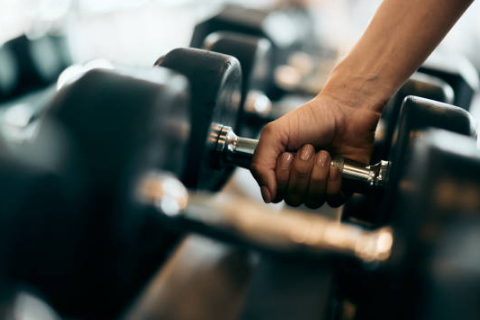There’s no one-size-fits-all answer when it comes to workout routines, but you can tailor your schedule based on your personal fitness goals. One of the most common questions is about workout order: should you start with cardio or strength training?
Cardio Before or After Lifting Weights?
Let’s get straight to the point: there’s no universal rule for whether you should start with cardio or weights—it really depends on your fitness goals.
For example, if you’re training for a race or prioritizing heart health, doing cardio first might make the most sense. The reasoning is simple: you want to devote the most energy to the activity that matters most. If you’re focused on endurance training, lifting weights for 30 minutes beforehand could leave you too fatigued to perform well during your cardio session.

On the other hand, if your main goals are fat loss, weight loss, or building muscle, it’s better to start with strength training. Intense cardio beforehand can leave your muscles tired and potentially reduce your lifting performance—or even increase the risk of injury.
That said, even if your focus is on building muscle or burning fat, doing a light cardio warm-up before lifting is beneficial. A brisk walk uphill or a few flights of stairs can prep your body without draining your energy for your main workout.
So, if your goal is muscle gain, avoid doing long or intense cardio before lifting. But skipping a warm-up altogether isn’t ideal either—light cardio beforehand can actually help you perform better and avoid injury.
Pros and Cons of Each Approach
If you’re unsure of your primary goal, consider the pros and cons of each sequence to decide what works best for you. Remember, you can adjust your routine as needed—there’s no need to always do one before the other.
Benefits of Doing Cardio First
-
Light cardio is a great warm-up: As mentioned, activities like brisk walking or using the elliptical can help warm up your body before lifting. If you’re focused on building muscle, keep the cardio short and effective to avoid draining your energy.
-
You’ll build better cardiovascular endurance: If you’re training for an endurance event like a marathon, or simply want to boost your stamina, getting your cardio done before lifting is often the best strategy.
Benefits of Doing Cardio After Weight Training
-
You’ll have more energy for lifting: Running a few miles before lifting can wear you out, making it harder to lift heavy or complete your reps. A short warm-up followed by strength training ensures you’re fresh for your main lifts. You can still include a longer cardio session after your strength workout if you like.
-
Lighter lifting can enhance your cardio session: Strength training helps build muscles that can improve your running or cardio performance. Just avoid going too heavy, especially before a long or intense cardio session. If endurance is your focus, a short strength session beforehand can act as a good warm-up.

How Often Should You Do Each Type of Workout?
Everyone’s ideal routine varies depending on your chosen exercises and fitness level, but general recommendations include:
-
Strength train all major muscle groups (legs, hips, back, core, chest, shoulders, arms) at least two days a week.
-
Get at least 150 minutes of moderate-intensity activity, or 75 minutes of vigorous activity, per week—spread out over 4–5 days or daily if possible.
-
Cut down on sitting and break up long periods of inactivity with movement.
As long as you’re moving your body every day—even just by walking—you’re on the right track. Don’t worry too much about the exact numbers if you’re still building the habit.
Best Cardio to Pair With Strength Training
If you want to incorporate cardio into your strength routine (or vice versa), here are a few smart strategies to help you choose the right cardio approach.
Many people use a “split routine”—targeting different muscle groups on different days to maximize muscle growth and recovery. Some days may focus on upper body (back, biceps, triceps, chest), while others emphasize lower body (glutes, quads, calves). Here’s how to match cardio with your lifting schedule, according to expert advice:
-
On upper body days: Do cardio either before or after lifting—whichever you prefer. If you choose to do cardio first, pick something that mainly works your legs (like running or stair climbing) so you don’t fatigue your arms before lifting.
-
On lower body days: Walk for about 10 minutes beforehand to loosen up your muscles and prepare for leg-focused exercises. The last thing you want is to try running after heavy deadlifts. If you plan to do more intense cardio on leg days, save it for after your strength training so it doesn’t interfere with your performance.

